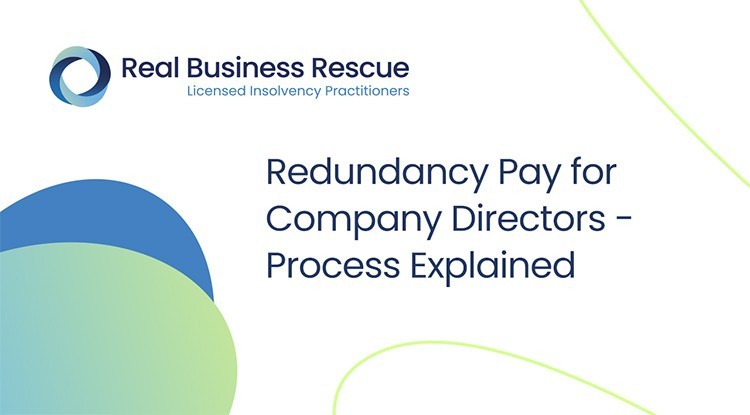Who Pays Redundancy Money? Recognizing Employer Responsibilities in the UK
Who Pays Redundancy Money? Recognizing Employer Responsibilities in the UK
Blog Article
Checking Out the Interaction Between Firm Redundancy and Organizational Versatility for Future Growth
In the dynamic landscape of today's business globe, the elaborate partnership between firm redundancy and business versatility arises as a critical element for continual growth and success. Business frequently deal with the obstacle of striking a delicate balance in between keeping a level of redundancy to mitigate dangers and promoting flexibility to react promptly to the ever-evolving market demands.
Significance of Business Redundancy
Firm redundancy is a vital aspect that boosts business resilience and mitigates functional threats. By including redundancy actions within the business framework, business can much better endure unpredicted disturbances and fluctuations in the organization environment. Redundancy works as a tactical buffer, allowing business to adjust and respond efficiently to unanticipated challenges without compromising necessary operations.
One secret aspect of the significance of firm redundancy is its role in making sure continuity during times of crisis. When confronted with unexpected changes or emergency situations, redundant systems, sources, or personnel can step in to keep essential functions and protect against widespread disruptions. This connection not just safeguards the business's online reputation and customer trust but additionally decreases economic losses and operational downtime.

Approaches for Business Flexibility

Another critical strategy is buying innovation and framework that can sustain versatility and scalability. Carrying out digital devices, automation, and information analytics can simplify procedures, improve efficiency, and provide important insights for informed decision-making. Moreover, creating adaptable business structures that permit quick adjustments to market characteristics and customer requirements is necessary for staying affordable in a quickly progressing atmosphere. By proactively recognizing potential disturbances and possibilities, companies can proactively prosper and adapt in an ever-changing company landscape.
Harmonizing Redundancy and Versatility
Attaining a harmonious balance in between operational redundancy and business versatility is extremely important in navigating the complexities of a dynamic company atmosphere. Redundancy within a company gives a safeguard, ensuring continuity and stability in procedures. Nevertheless, an excess of redundancy can bring about ineffectiveness and impede versatility to transforming market conditions. On the various other hand, organizational flexibility enables firms to respond immediately to exterior disruptions and take brand-new possibilities. Striking the right balance between redundancy and versatility is a fragile process that requires a deep understanding of the company's objectives, industry characteristics, and danger tolerance.
To achieve this balance, firms require to conduct regular analyses of their operations to identify locations where redundancy is essential for danger reduction and where versatility can drive innovation and development. Applying versatile frameworks, promoting a culture of continuous learning and enhancement, and motivating open communication across all degrees of the organization are crucial strategies to balance redundancy and adaptability effectively. By lining up these two important aspects, business can place themselves for lasting development and success in an ever-changing service landscape.
Study on Adjustment Success
In taking a look at instances of effective organizational adaptation, it becomes apparent that the check it out interplay in between functional redundancy and flexibility is a specifying consider forming durable organizations. One compelling study is that of Netflix. Initially a DVD rental solution, Netflix demonstrated remarkable flexibility by transitioning right into a streaming system when digitalization disrupted the sector. By purposefully investing in innovation and content creation, Netflix not just flourished but made it through in a quickly developing market. One more standout instance is Amazon. Beginning as an online bookstore, Amazon constantly adapted its organization model, broadening into diverse markets such as cloud computing and fabricated knowledge. This flexibility allowed Amazon to remain ahead of competitors and satisfy transforming customer needs. Finally, Adobe offers a significant image of effective adaptation. The business changed from selling software licenses to a subscription-based version, guaranteeing reoccuring revenue streams and boosted client engagement. These case research studies highlight the value of operational redundancy combined with business flexibility in fostering long-term growth and competition.
Building Strength for Future Development
Structure strength for future growth requires a strategic positioning of operational procedures with market characteristics and arising trends. Firms need to adapt to altering environments by promoting a culture of versatility, development, and constant improvement. Durability entails not only recuperating from problems but likewise proactively planning for future obstacles. One essential element of structure durability is spending in robust danger administration methods to mitigate possible disruptions. This includes circumstance planning, branching out supply chains, and creating contingency prepare for different backups (who pays redundancy money).
In addition, fostering solid connections with stakeholders, such as clients, employees, providers, and the community, is crucial for keeping and weathering uncertainties trust and support during turbulent times. Effective interaction and openness play an important function in building durability, as they help help with and line up expectations collaboration in navigating unpredictabilities.
In addition, companies require to focus on discovering and growth see here now efforts to upskill staff members and equip them with the required devices to adapt to changing conditions. By spending in their labor force, firms can enhance their versatility and agility, ultimately enhancing their strength for lasting future development.
Conclusion

In the vibrant landscape of today's business globe, the complex partnership between firm redundancy and organizational adaptability arises as a critical variable for continual growth and success. Firms often encounter the obstacle of striking a fragile balance between preserving a degree of redundancy to minimize risks and promoting adaptability to react promptly to the ever-evolving market demands.To accomplish this balance, firms need to perform regular assessments of their operations to determine locations where redundancy is needed for danger special info reduction and where flexibility can drive advancement and growth.In verdict, the interaction in between firm redundancy and organizational adaptability is critical for future growth. Structure durability with a combination of redundancy and adaptability will certainly make sure that firms are prepared for the obstacles of the future.
Report this page